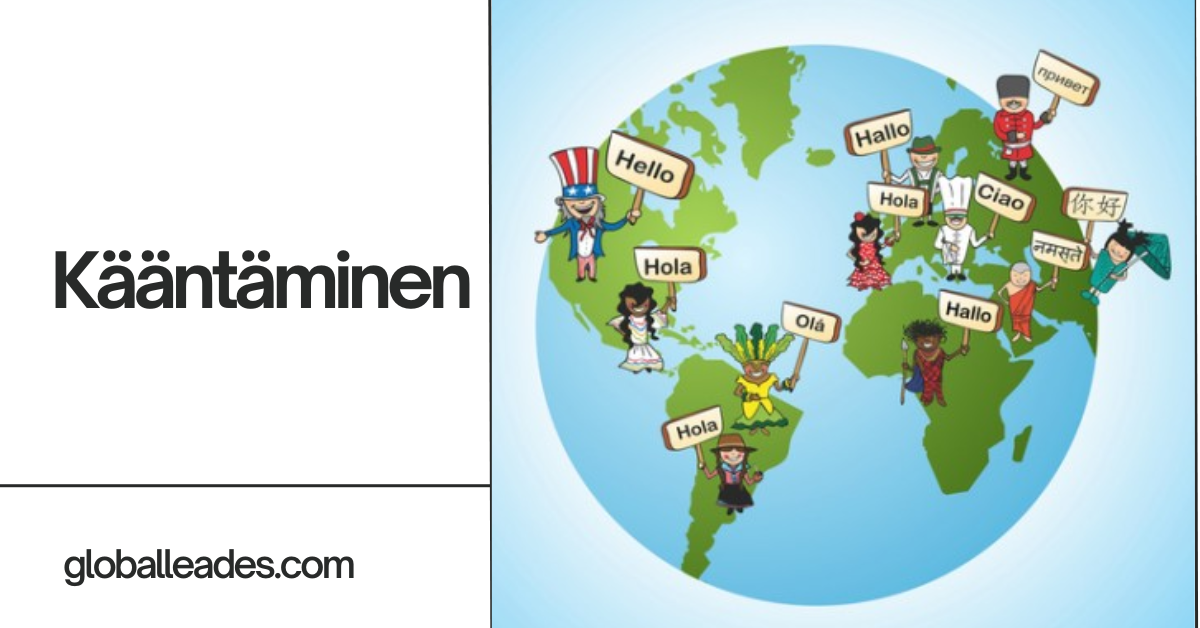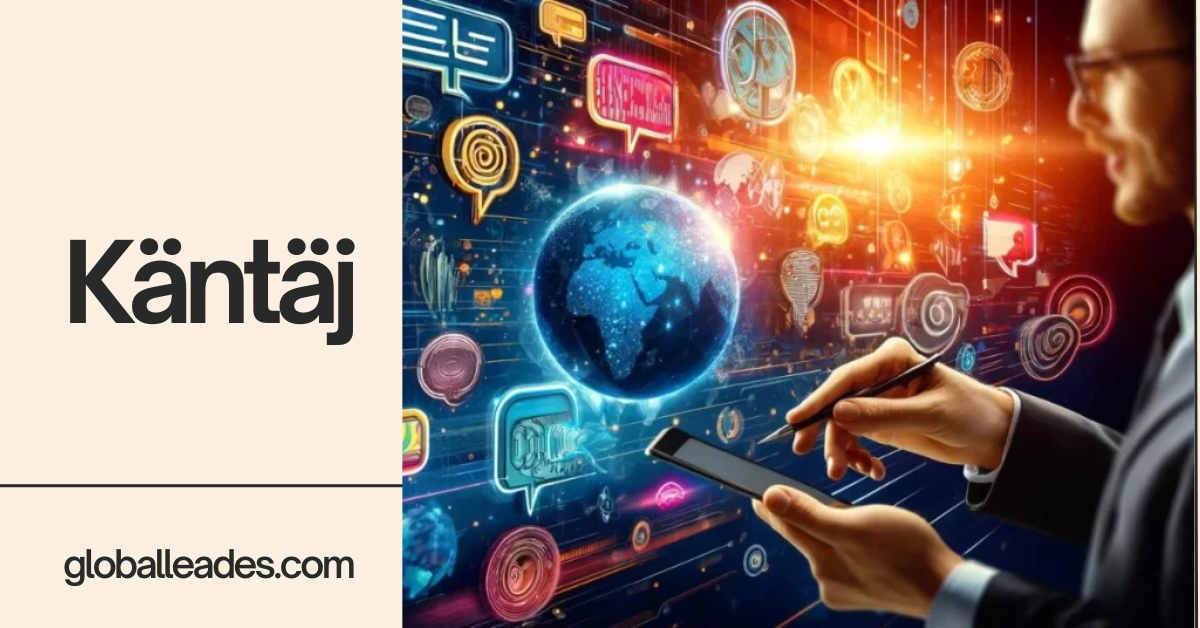In a world that is increasingly interconnected, the ability to bridge language barriers has become more important than ever.
“Kääntäminen,” the Finnish word for translation, plays a crucial role in facilitating communication across cultures and languages.
In this comprehensive guide, we will delve into the intricacies of “kääntäminen,” exploring its historical significance, the process involved, challenges faced, technological advancements, career opportunities, and future trends.
What is “Kääntäminen”?
“Kääntäminen” refers to the process of transferring meaning from one language to another, whether it be spoken or written.
Unlike interpretation, which involves converting spoken language in real-time, translation deals primarily with written text. It is a complex and nuanced endeavor that requires not only linguistic proficiency but also cultural sensitivity and creative problem-solving skills.
Understanding the Basics of Translation
At its core, translation involves more than just substituting words from one language to another. It requires a deep understanding of the source text and the ability to convey its meaning accurately and effectively in the target language.
Also Read: Käänjä – The Role Of Its In Communication In 2024
Translators must navigate linguistic nuances, cultural references, and idiomatic expressions to produce a faithful rendition of the original message.
Historical Significance
Translation has a long and rich history, dating back to ancient civilizations such as Mesopotamia and Egypt. Throughout the ages, translation has played a vital role in facilitating trade, diplomacy, and the exchange of ideas across borders.
From the works of early religious scholars to the translation of scientific texts during the Renaissance, translators have been instrumental in shaping our understanding of the world.
The Role of “Kääntäminen” in Communication
In today’s globalized world, translation serves as a bridge between cultures, allowing people from different linguistic backgrounds to communicate and collaborate effectively. Whether it’s translating legal documents, marketing materials, or literary works, “kääntäminen” plays a crucial role in breaking down barriers and fostering understanding.
Types of Translation
Translation can take many forms, depending on the context and purpose of the communication. Some common types of translation include:
- Legal translation: Translating legal documents such as contracts, agreements, and court proceedings.
- Medical translation: Translating medical records, research papers, and pharmaceutical documents.
- Literary translation: Translating novels, poems, and other literary works from one language to another.
- Technical translation: Translating manuals, technical specifications, and engineering documents.
- Website translation: Adapting website content for different language audiences.
Also Read: Käntäjää – Why Translation Matters In 2024
Each type of translation presents its own set of challenges and requires specialized knowledge and expertise.
The Process of Translation
Translation is a multi-stage process that involves several steps:
- Analysis: Understanding the source text and its intended audience.
- Translation: Converting the text into the target language while preserving its meaning and style.
- Revision: Reviewing the translated text for accuracy, clarity, and coherence.
- Editing: Refining the translation to ensure linguistic and cultural appropriateness.
- Proofreading: Checking the final version for errors in grammar, punctuation, and formatting.
Throughout this process, translators must make strategic decisions to ensure that the final translation meets the needs of the target audience.
Challenges in Translation
Translation poses several challenges, including linguistic differences, cultural nuances, and the ambiguity of language. Translators must navigate these obstacles while maintaining fidelity to the original text.
Additionally, tight deadlines, technical constraints, and client expectations can further complicate the translation process. Despite these challenges, skilled translators are able to overcome obstacles and produce high-quality translations that resonate with audiences.
Tools and Technologies in Translation
Advancements in technology have revolutionized the field of translation, providing translators with a wide range of tools and resources to enhance their work. Computer-assisted translation (CAT) tools, such as translation memory systems and terminology databases, help streamline the translation process and improve consistency.
Also Read: Käntäj – Exploring the Revolutionary This Translation Tool In 2024
Machine translation algorithms, powered by artificial intelligence, offer quick and accessible translation solutions, although they may not always produce accurate results. Additionally, cloud-based platforms and collaboration tools enable translators to work efficiently and collaborate with clients and colleagues remotely.
The Impact of Technology on “Kääntäminen”
Technology has had a profound impact on the practice of “kääntäminen,” transforming the way translations are produced, distributed, and consumed.
While some fear that automation and machine translation may replace human translators, others argue that technology should be seen as a complement rather than a threat. By leveraging technology to streamline routine tasks and enhance productivity, translators can focus on higher-level tasks such as cultural adaptation, stylistic refinement, and creative expression.
Ultimately, technology has the potential to expand the reach of translation and make multilingual communication more accessible to people around the world.
Career Opportunities in Translation
Translation offers a diverse range of career opportunities for those with linguistic and cultural expertise. Translators may work as freelancers, in-house professionals, or within translation agencies, catering to a wide range of industries and sectors.
In addition to translation, professionals may specialize in areas such as localization, subtitling, and transcreation. With the growing demand for multilingual content in a globalized marketplace, translation remains a viable and rewarding career path for language enthusiasts.
Tips for Effective Translation
To produce high-quality translations, translators should consider the following tips:
- Understand the context and purpose of the text.
- Research terminology and subject matter thoroughly.
- Maintain consistency in style, tone, and terminology.
- Consider the cultural implications of language choices.
- Seek feedback from peers and subject matter experts.
- Continuously update skills and stay abreast of industry trends.
By adhering to these principles, translators can deliver translations that meet the needs and expectations of their clients and audiences.
Cultural Significance of “Kääntäminen”
Translation not only facilitates communication but also serves as a vehicle for cultural exchange and understanding. Through translation, readers gain access to diverse perspectives, voices, and experiences from around the world.
Also Read: Käämtäjä – Know The Importance In 2024
Translators play a vital role in preserving and promoting cultural heritage, literature, and traditions across generations. By bridging linguistic and cultural divides, translation fosters empathy, mutual respect, and appreciation for the richness of human diversity.
Case Studies: Successful Translation Projects
Numerous translation projects have made a significant impact on society and culture. From the translation of religious texts such as the Bible and the Quran to the localization of global brands like Coca-Cola and McDonald’s, successful translation projects have shaped our shared global landscape.
Additionally, literary translations of works by authors such as Gabriel García Márquez, Haruki Murakami, and J.K. Rowling have introduced readers to new worlds and perspectives, transcending linguistic boundaries and cultural barriers.
Future Trends in Translation
Looking ahead, the future of translation is poised to be shaped by emerging technologies, evolving consumer preferences, and geopolitical shifts.
Machine translation and artificial intelligence will continue to play a prominent role, enabling faster and more accessible translation solutions. However, human translators will remain indispensable for tasks that require creativity, cultural nuance, and critical thinking.
Additionally, the demand for translation and localization services is expected to grow as businesses expand into new markets and digital content becomes increasingly globalized.
Conclusion
In conclusion, “kääntäminen” is not merely a mechanical process of converting words from one language to another but a dynamic interaction that bridges linguistic and cultural divides, enabling communication, fostering understanding, and enriching the human experience.
From its historical origins to its modern-day applications, translation continues to play a vital role in connecting people, ideas, and cultures across the globe. As technology advances and the world becomes increasingly interconnected, the importance of skilled translators and interpreters will only continue to grow.
By embracing innovation, cultivating cultural competence, and upholding the highest standards of professionalism, translators can navigate the challenges and opportunities of the evolving translation landscape.
As we look to the future, let us celebrate the transformative power of “kääntäminen” in shaping a more inclusive, interconnected, and harmonious world.
FAQs
What makes a good translator?
A good translator possesses not only linguistic proficiency in multiple languages but also cultural sensitivity, attention to detail, and the ability to convey the nuances and context of the original text accurately.
Can machine translation replace human translators?
While machine translation has made significant advancements, it still lacks the ability to understand context, cultural nuances, and idiomatic expressions, making human translators indispensable for producing high-quality translations.
How long does it take to translate a document?
The time required to translate a document depends on various factors such as the length and complexity of the text, the language pair involved, and the translator’s experience. On average, translators can typically handle around 2,000 to 3,000 words per day.
What is localization?
Localization is the process of adapting a product, service, or content to suit the linguistic, cultural, and regulatory requirements of a specific target market. It involves not only translating text but also adapting images, colors, symbols, and even user interfaces to resonate with local audiences.
How can I ensure the quality of a translation?
To ensure the quality of a translation, it’s essential to work with experienced translators who are native speakers of the target language, provide clear instructions and reference materials, and allow sufficient time for thorough review and revisions.
What is transcreation?
Transcreation is a specialized form of translation that focuses on adapting creative content, such as marketing materials, slogans, and advertisements, to resonate with the cultural sensibilities and preferences of the target audience while maintaining the original message and intent.
Are there any ethical considerations in translation?
Yes, ethical considerations in translation include respecting client confidentiality, accurately representing the original message, avoiding bias or discrimination, and seeking permission for any sensitive or copyrighted material used in the translation process.



